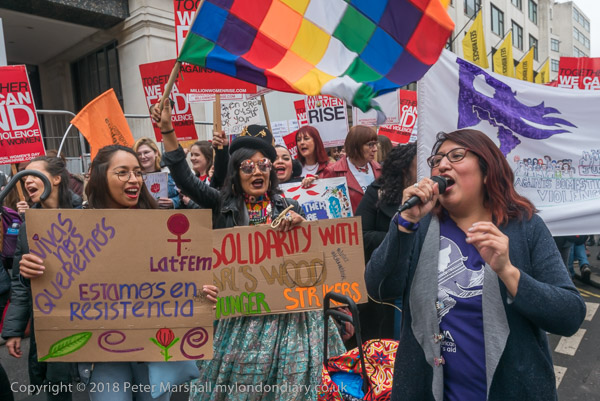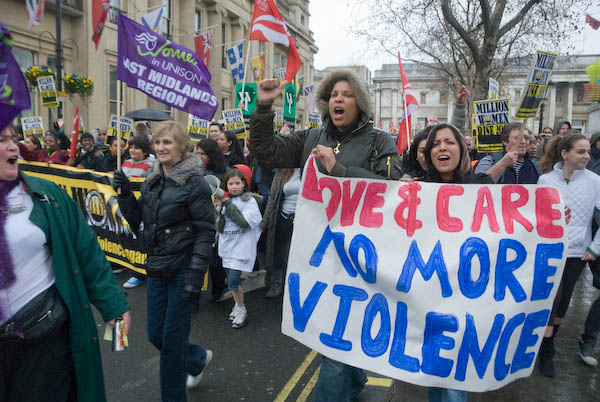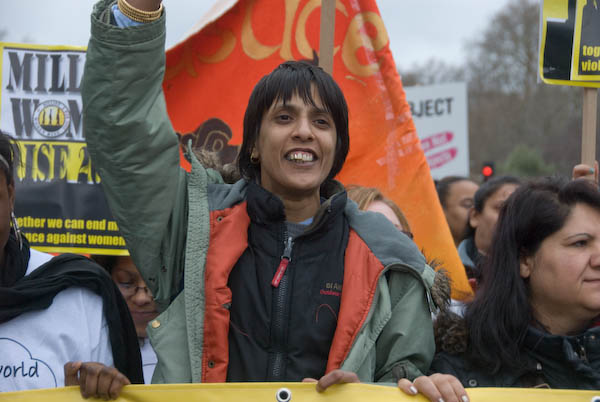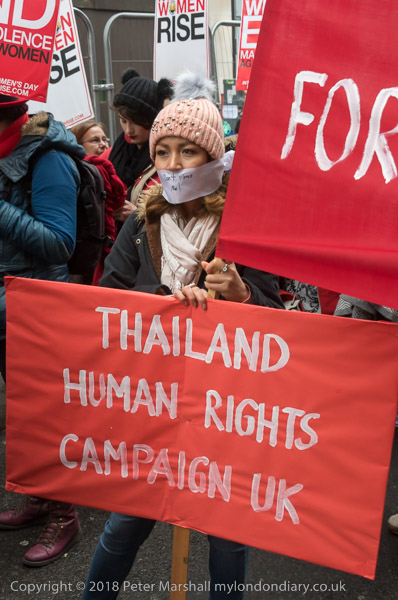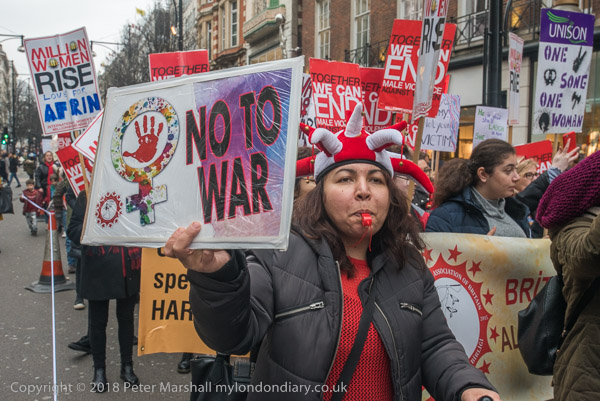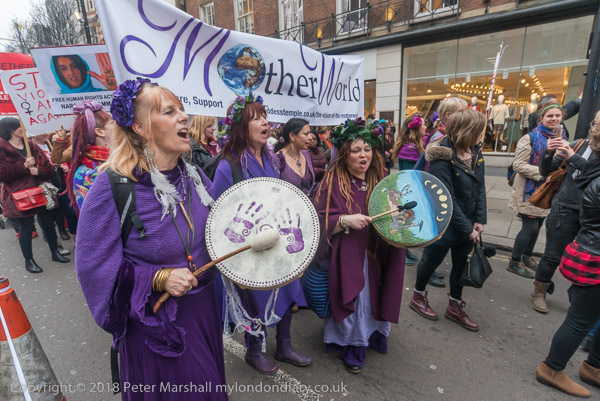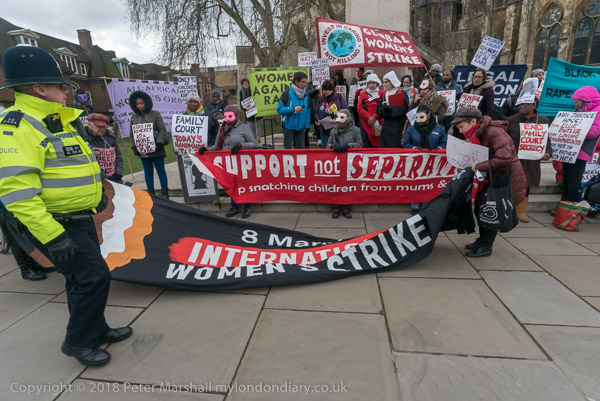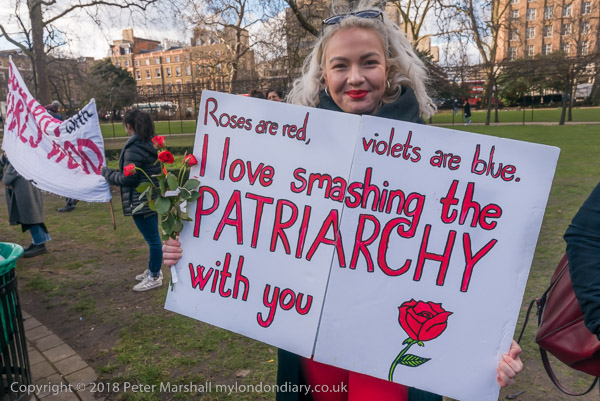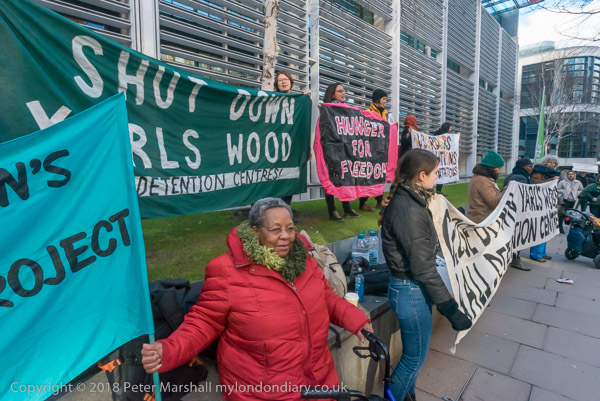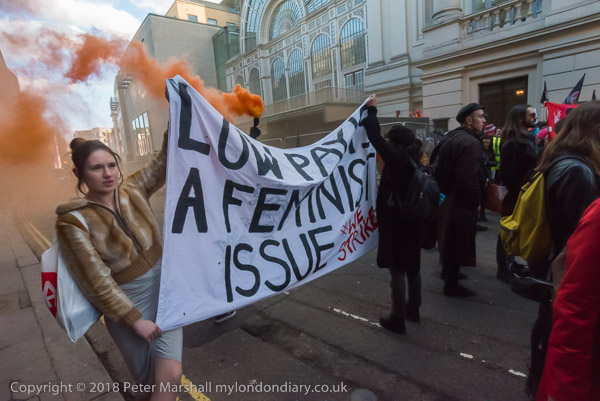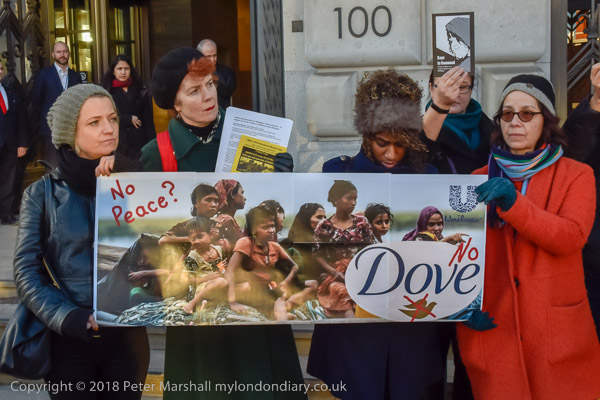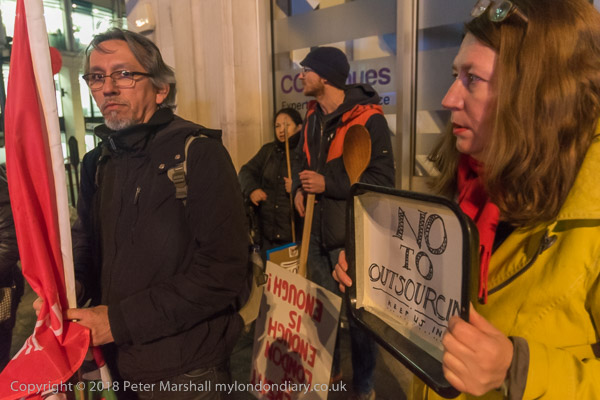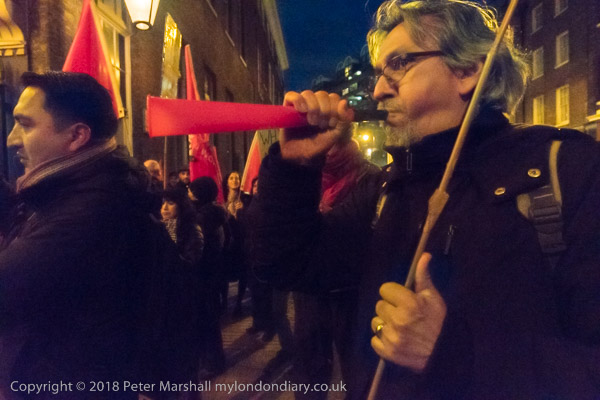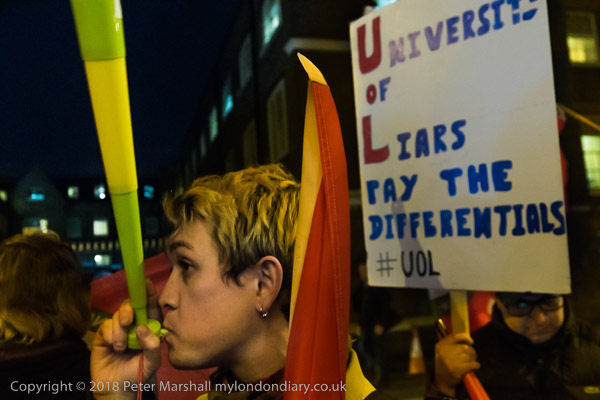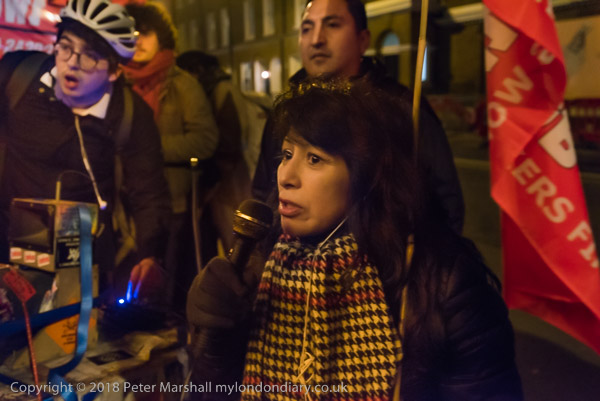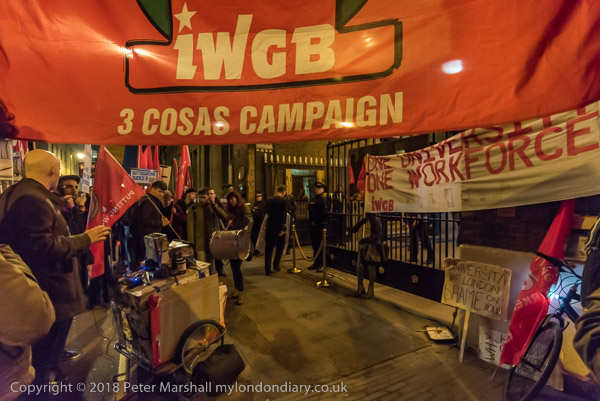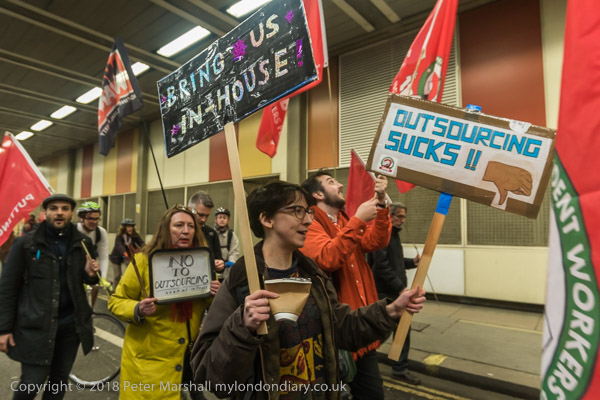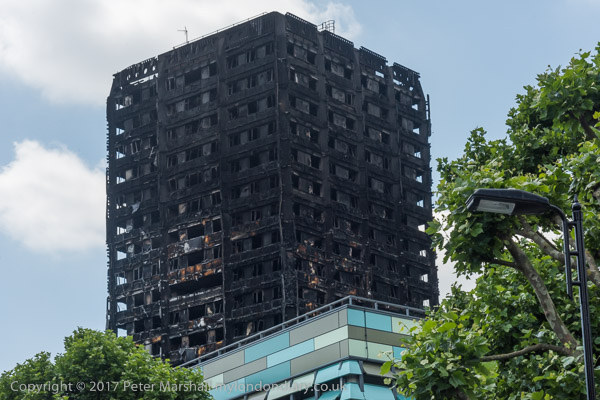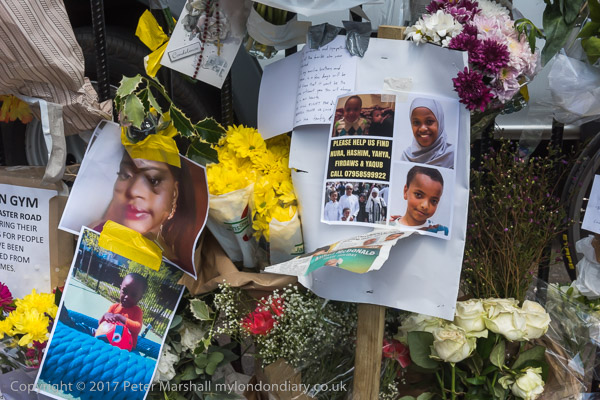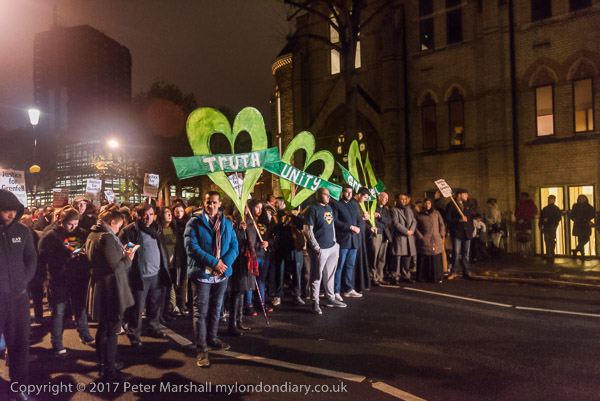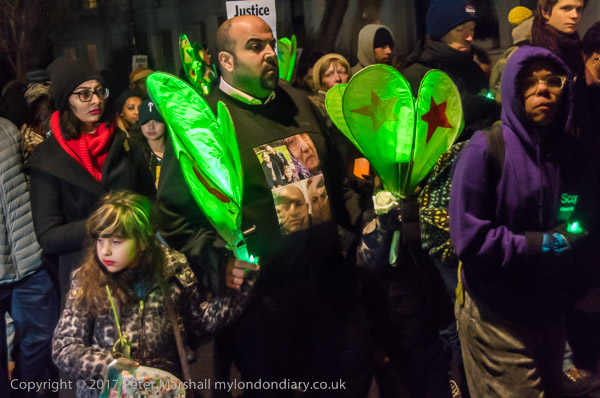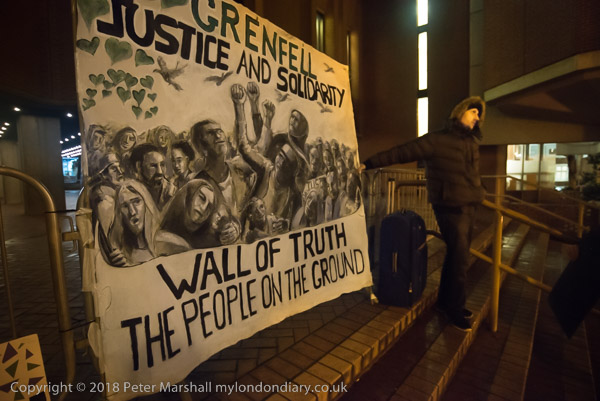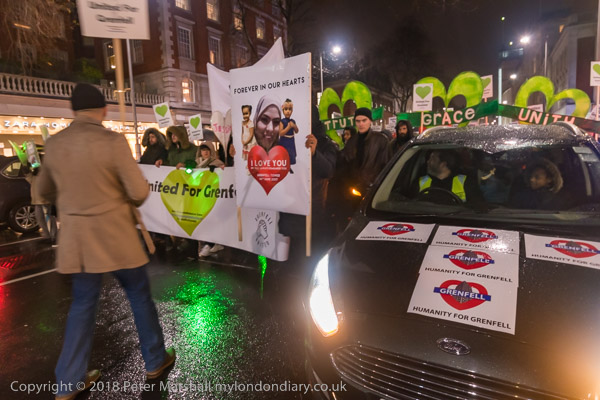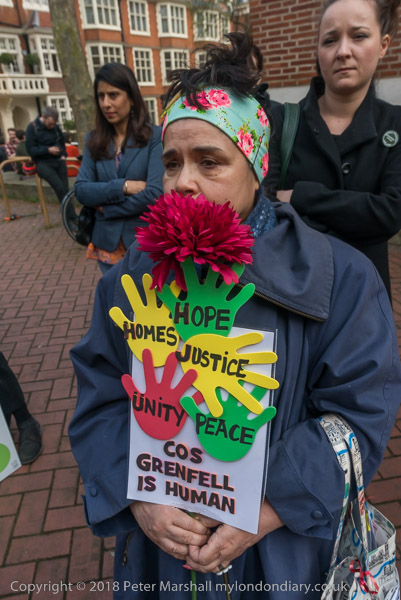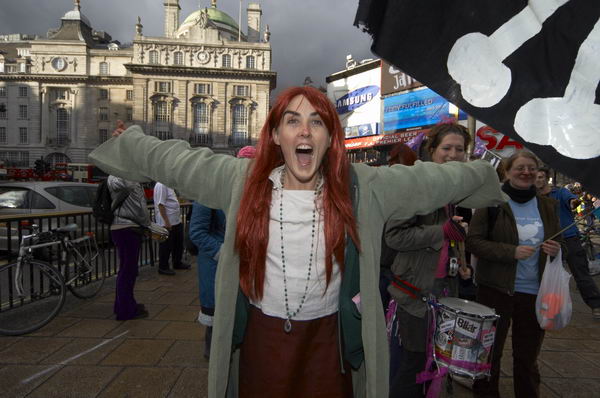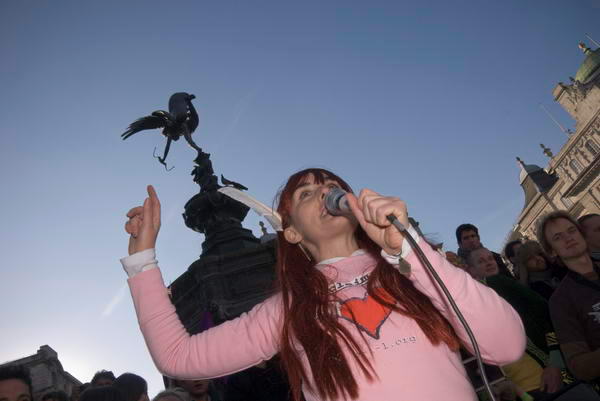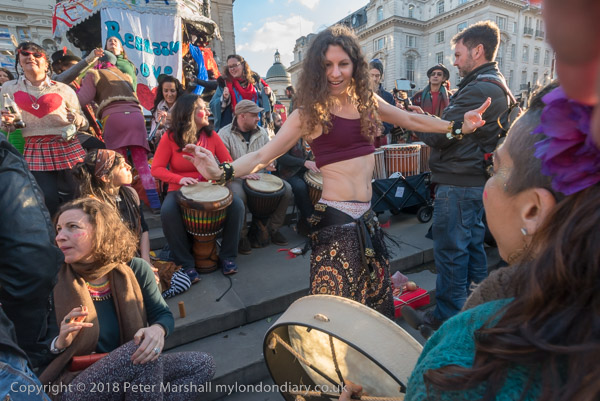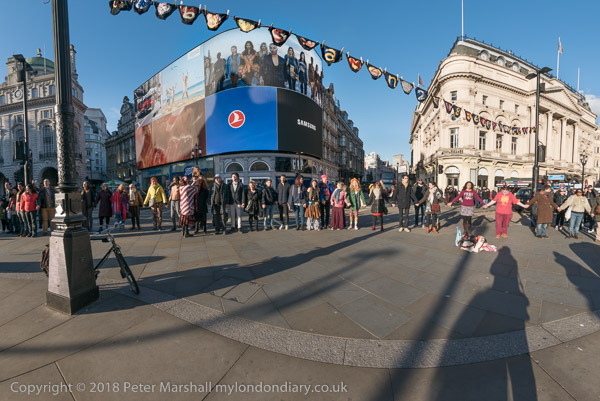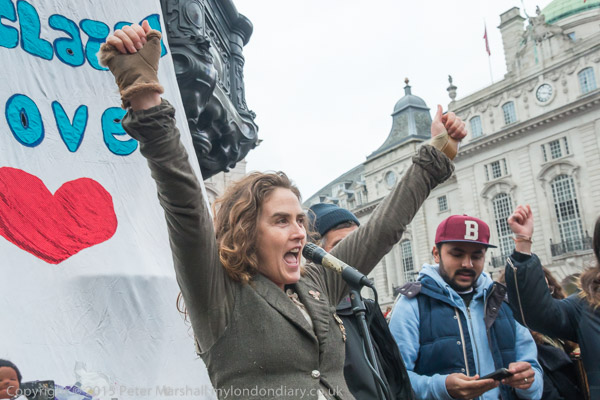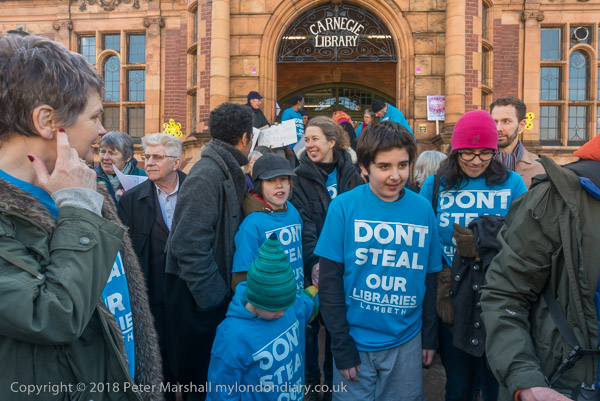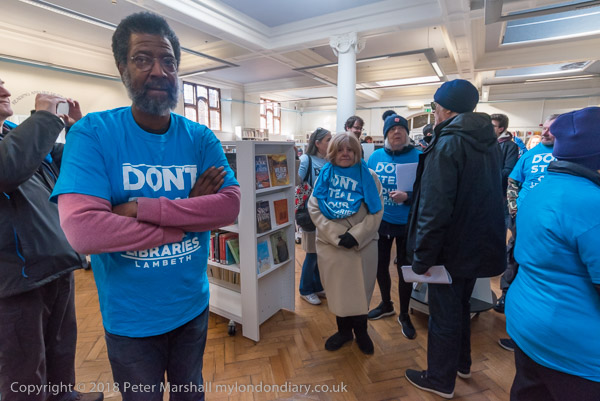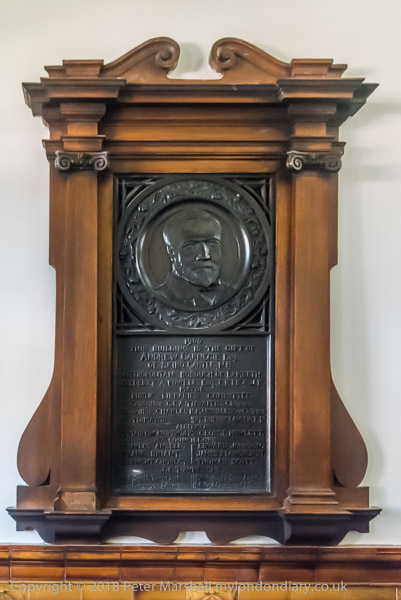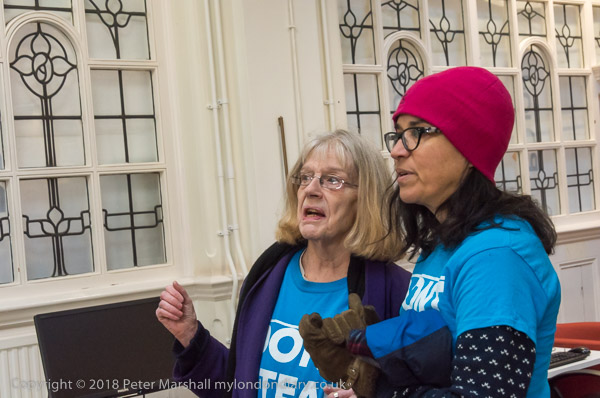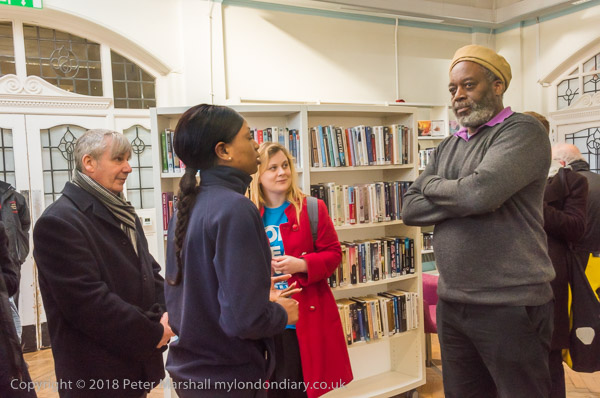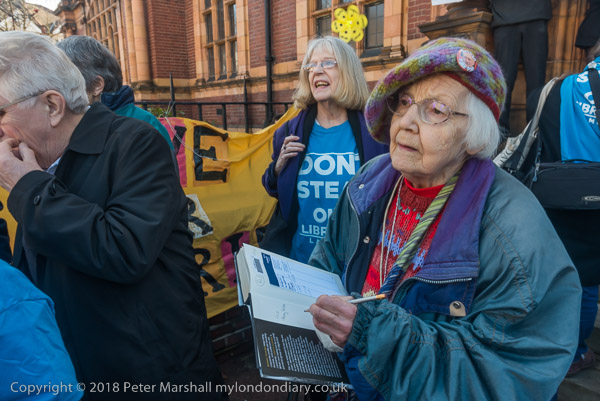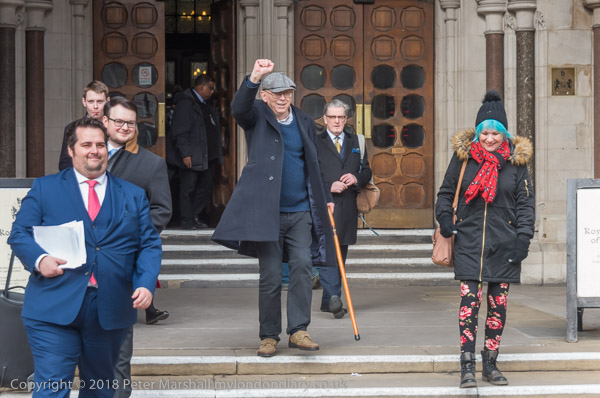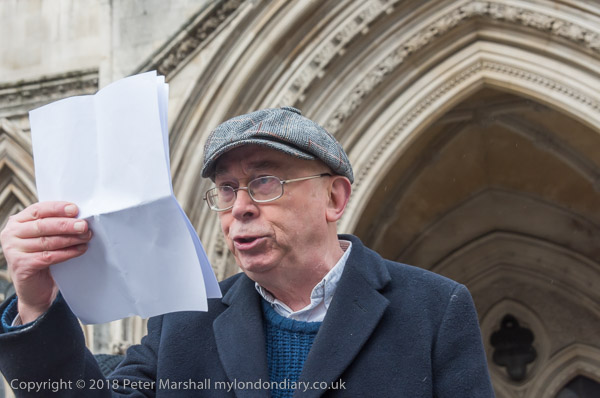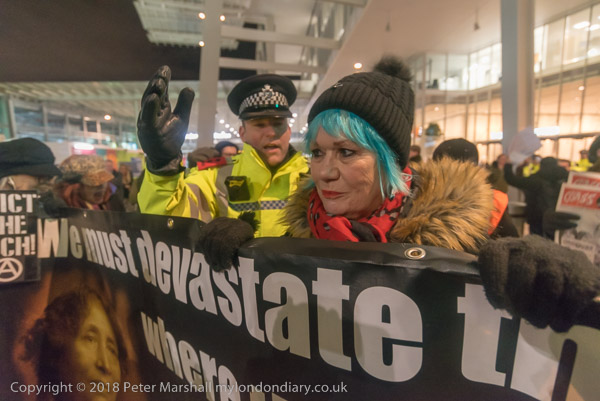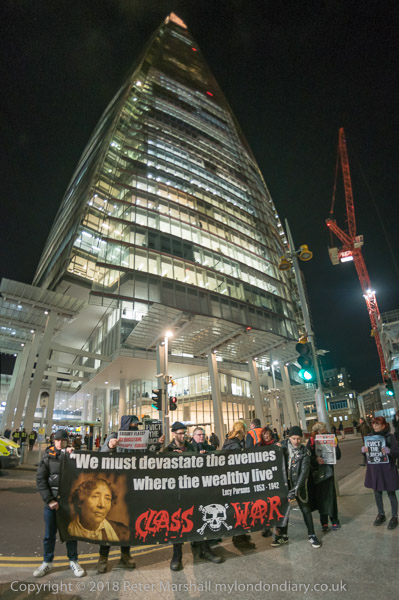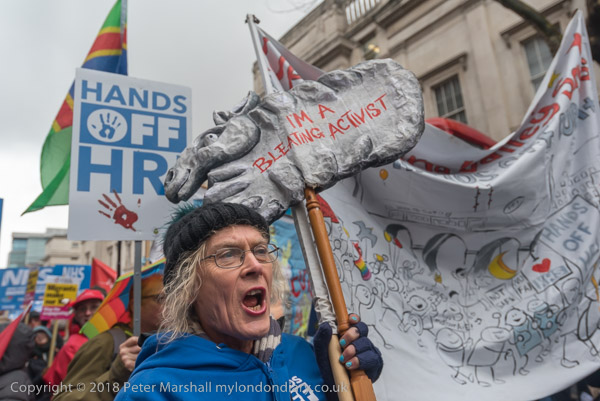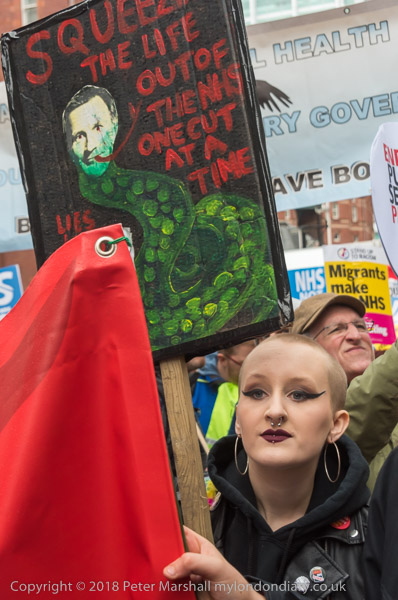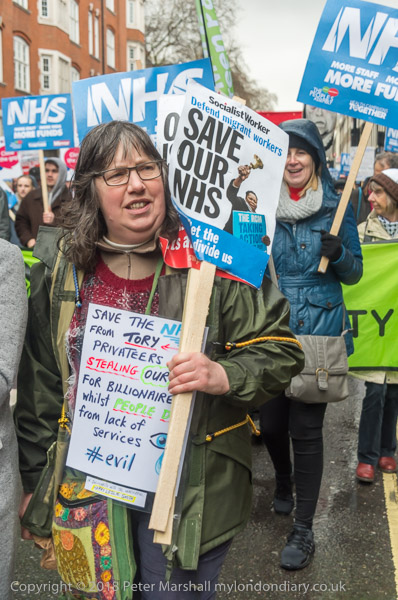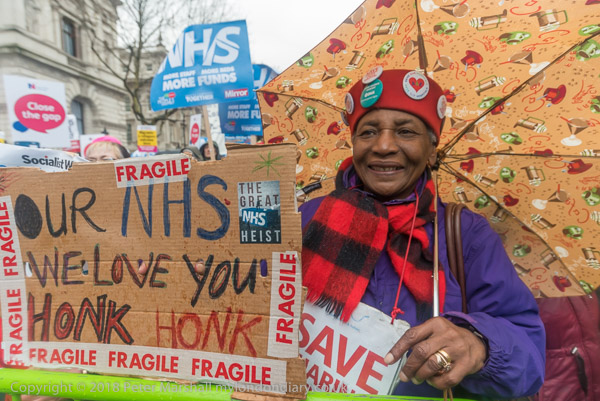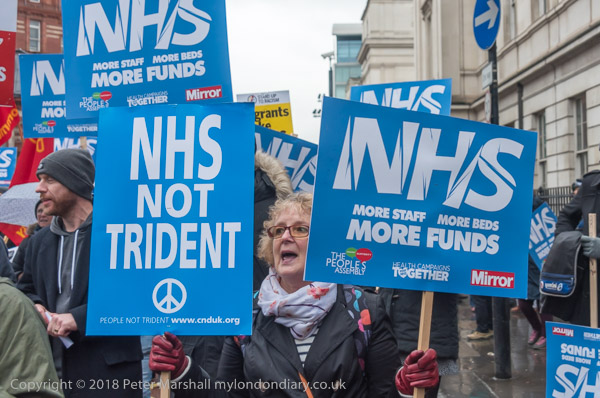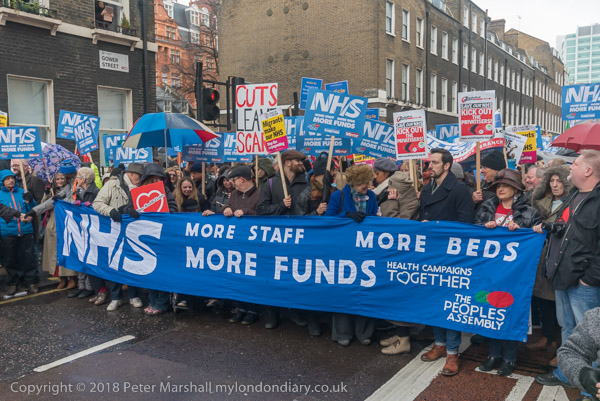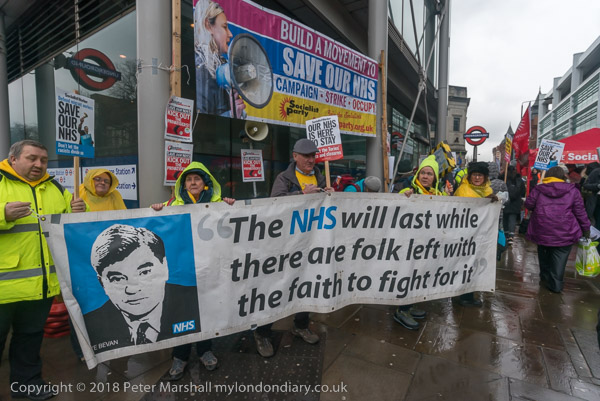I’m not a great traveller, as I’ve often noted here. Though I have occasionally been lured away by the delights of Paris and Hull as well as a few trips further afield, London still has so much to offer. And people come here from all around the world, not just as tourists (though sometimes it does seem most of the world’s population is cluttering our streets) but to live and also to protest about events back in their natal countries.
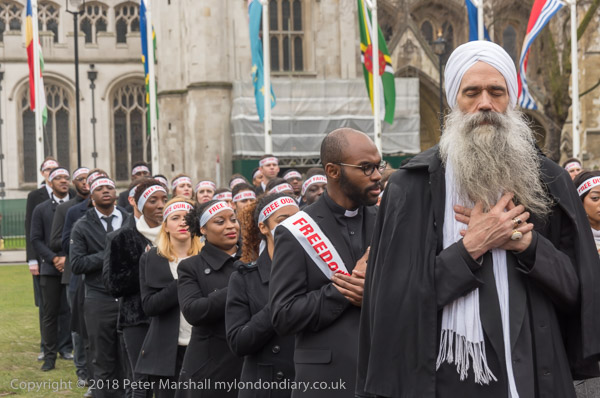
After the Million Women Rise march (with a strong migrant contribution) I found a large block of people standing in neat rows in Parliament Square in one of a number of protests called around the world by the South Korean based NGO The Association of Victims of Coercive Conversion Programmes (AVCCP) called after the death of a Korean girl, Jo In Gu, allegedly suffocated by her parents for refusing to take part in a religious conversion programme. Those taking part were certainly not all Koreans, but came from various countries and faiths, including Sikhs, Buddhists and Christians and varied musical traditions, including a Scotsman with kilt and pipes.
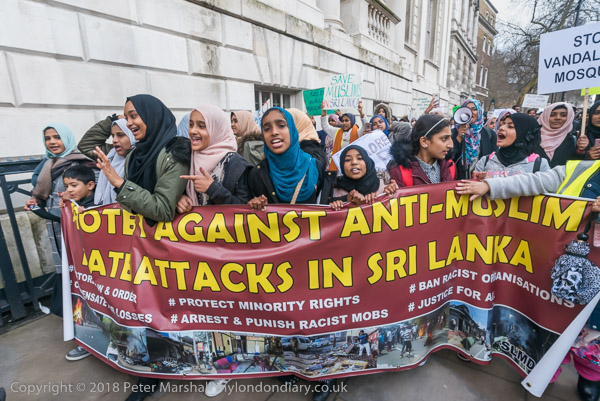
I hadn’t actually come to photograph the AVCCP protest but the Sri Lankan Tamils who were protesting opposite Downing St against the continuing attacks by Buddhist mobs in Muslim neighbourhoods around Kandy which have destroyed shops, restaurants and a mosque. They say the Sri Lankan government, which has declared a state of emergency and closed down much of social media, does not take effective action against attacks on minorities and accuse police and soldiers for failing to try to stop the attacks. They see what is happening as part of a deliberate policy of ethnic cleansing by the government.
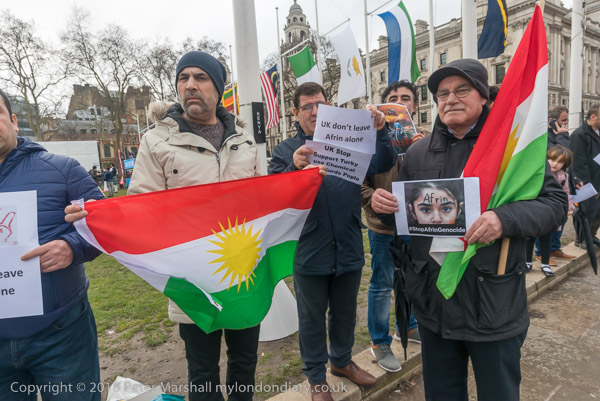
Back in Parliament Square another protest was taking place, with Kurds arriving to protest against the Turkish attacks on Afrin. They want the British government to take action and end its support of Turkey who has been the major supporter of ISIS and who is using former ISIS and al-Qaeda forces in its attack on Afrin, where the local authority reports that 220 civilians have been killed and 600 injured. Unfortunately the British government supports Turkey, turning a blind eye to all its (and President Erdogan’s) faults because it sees it as an important NATO ally in opposing an increasingly threatening Russia. Meanwhile of course Turkey is increasingly making overtures to Russia which has established itself as a major player in the area through its support of the Syrian regime.
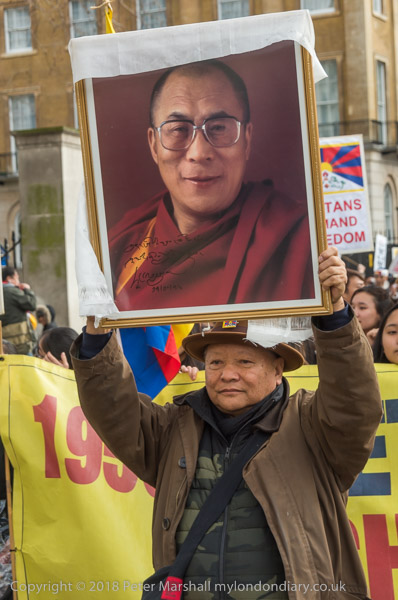
The Tamils left Downing St to march to the Sri Lankan Embassy, but another protest was now taking place, part of the annual Tibet Freedom March in London commemorating the Tibetan National Uprising of 1959, 59 years since a huge mass of 300,000 Tibetans prevented the Chinese Army from abducting the Dalai Lama, Tenzin Gyatso. A few days later, after his palace came under artillery fire, he escaped with his ministers making the 14 day journey across the Himalayas to India while the outnumbered and poorly equipped Tibetan Army fought off the Chinese.
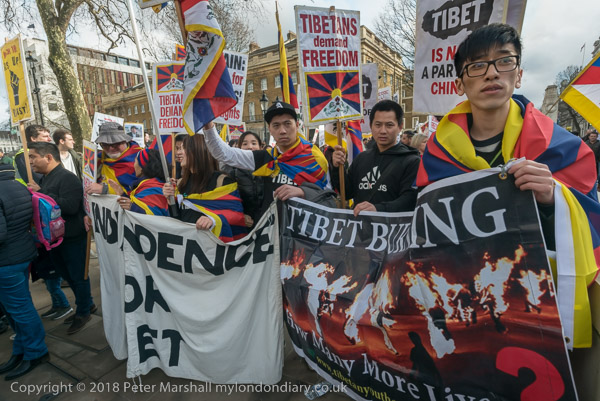
At Downing St there were some short speeches and a rather Tibetan long prayer as well as the singing of the National Anthem before those attending, mainly Tibetans or of Tibetan origin but with quite a few Western supporters set off to march to a protest at the Chinese Embassy, but I left them to go in the other direction and make my way home.
Protest forcible religious conversions
Sri Lankans protest Buddhist violence
Against attacks on Afrin
London March for Freedom for Tibet
______________________________________________________
There are no adverts on this site and it receives no sponsorship, and I like to keep it that way. But it does take a considerable amount of my time and thought, and if you enjoy reading it, a small donation – perhaps the cost of a beer – would be appreciated.
My London Diary : London Photos : Hull : River Lea/Lee Valley : London’s Industrial Heritage
All photographs on this and my other sites, unless otherwise stated, are taken by and copyright of Peter Marshall, and are available for reproduction or can be bought as prints.
To order prints or reproduce images
________________________________________________________
